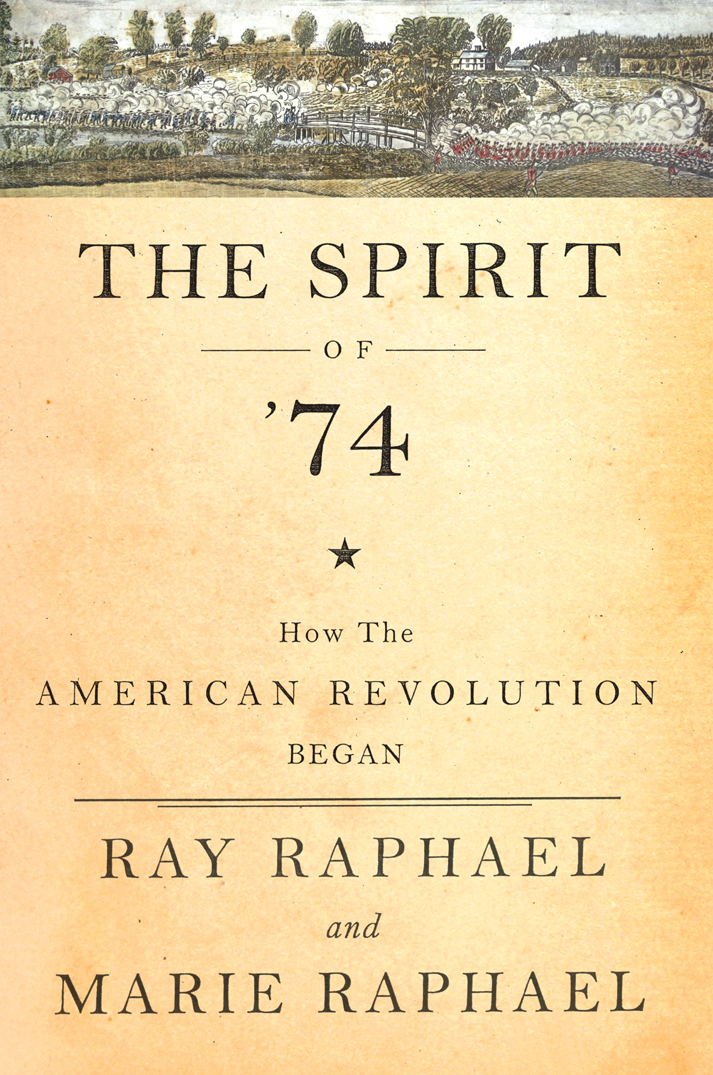
The Spirit of '74
How the American Revolution Began
کتاب های مرتبط
- اطلاعات
- نقد و بررسی
- دیدگاه کاربران
نقد و بررسی

June 22, 2015
In this concise, lively narrative, spouses Ray (Constitutional Myths) and Marie Raphael (A Boy from Ireland) identify Massachusetts as the cradle of the colonial rebellion against England. The authors persuasively argue that between December 1773 and April 1775, the organized resistance to British authority that developed throughout the former Puritan stronghold amounted to revolution. They open with a smart retelling of the dumping of East India Company tea into Boston Harbor, an action carefully planned by city inhabitants fed up with British taxation policies and their political implications. The authors expertly build tension by layering colonial action and British reaction over subsequent events in Massachusetts, weaving in well-chosen anecdotes to illustrate their points. Both well- and lesser-known colonials appear, including John and Abigail Adams, workingman George Robert Twelves Hewes, and councilman Joshua Loring. The touchstone character, however, is not one of the Founding Fathers, but “Captain General and Governor-in-Chief” Thomas Gage, the Englishman tasked with subduing Massachusetts. Neither a buffoon nor a devil, he was ultimately outmaneuvered by colonists devoted to revolution. The Raphaels expertly contextualize how the outbreak of a shooting war at Lexington and Concord marked a crucial “turning point” in, rather than the beginning of, the American Revolution.

July 15, 2015
A well-conceived work of popular history that fills a gap in the chronology of the American Revolution. The period between the Boston Tea Party, which took place at the end of 1773, and the first revolutionary battles at Lexington and Concord, which took place in April 1775, is unknown to most general readers and often overlooked even by professional historians' accounts of the Revolutionary War. Yet they were crucial, as Ray (Founding Myths, 2014, etc.) and Marie Raphael (A Boy from Ireland, 2007, etc.) ably document. Tea, write the authors, was but one of five goods on which Parliament levied taxes, but while it backed off on the other four, it held to tea as a more-than-symbolic gesture of imperial power that "became the symbol of its oppressive policies." While Parliament debated what to do about the upstarts in Boston, colonial committees and militias formed in more or less open rebellion. More important, during the 16-month gap, the rebels formed the basis of independent government. As the Raphaels write, when their rejection of British suzerainty placed the people of Worcester County, Massachusetts, in a so-called state of nature or mere anarchy, they stepped up and figured out how to rule themselves: "That the Worcester County Convention presumed it could appoint men to government posts, although it possessed no legal claim to do so, was in and of itself revolutionary." The period also revealed divisions in Colonial society. In Massachusetts, loyalists tended to cluster near fall-line cities while revolutionaries abounded in the western counties. Radicals and moderates argued about what to do with the newly formed militias even as formerly restrained British garrisons began to itch with punitive desire and Colonial governor Thomas Gage came to regard the colonists "for what they now were, near enemies"-and enemies who were better prepared for war than the British authorities imagined. The authors shine a light on a dark corner of the struggle for American independence.
COPYRIGHT(2015) Kirkus Reviews, ALL RIGHTS RESERVED.

























دیدگاه کاربران